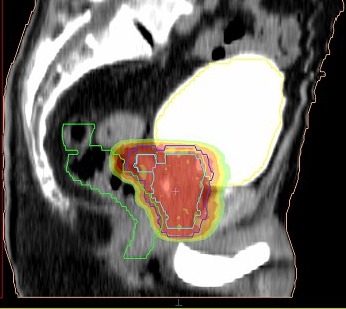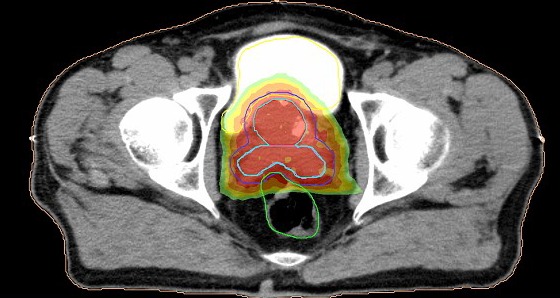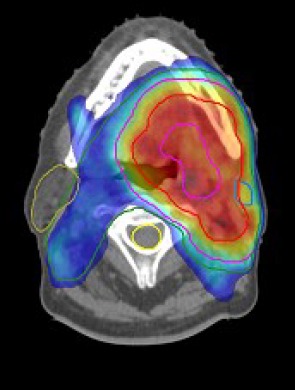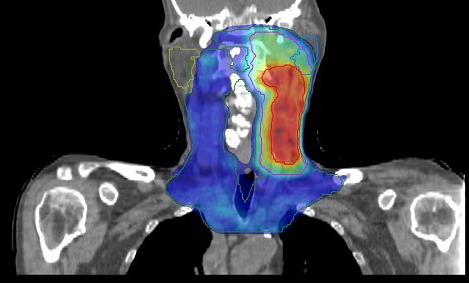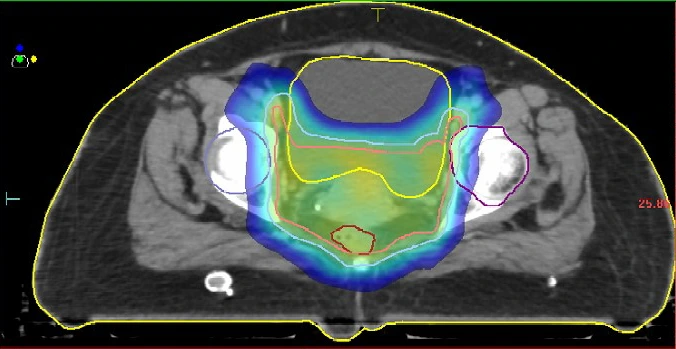Dr. Kamakshi Memorial Hospitals enhances the quality of Cancer Care in Tamil Nadu
Announcing the commissioning of Elekta Infinity,the latest cutting edge technology in Cancer Radiotherapy Treatment
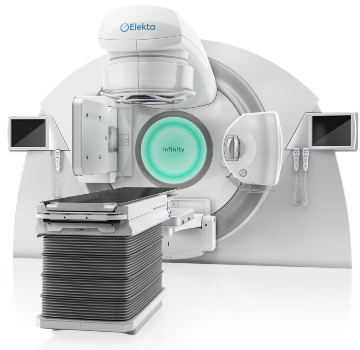
Chairman's Message

Chairman and Managing Director, Dr. Kamakshi Memorial Group of Hospitals
The Elekta Infinity Linear Accelerator is a high precision device that has revolutionised Radiotherapy for Cancer Patients. Radiation plays a very vital role in treating Breast Cancer, Uterine Cervix Cancer, Brain Tumors, Prostate Cancer, Tumors in the Liver & Lungs and even Pediatric Cancer. The biggest challenge in Radiotherapy is keeping health tissue from being exposed to radiation, leading to undue damage.
We are the only hospital in Chennai to have the 4 MV energy which is specifically used for treating cancer in paediatric age group. In addition, Elekta Infinity in our institute is the only machine in Tamil Nadu to have with Active Breathing Coordinator feature which ensures that the surrounding normal tissue such as the heart and other organs that move with respiration are protected from radiation while treating Breast and Lung cancers.Our unique setup offers precision delivery of the radiation dose to the millimeter. This makes it possible to deliver high doses in short periods of time as in the case of Stereotactic Radiation Therapy, thereby reducing the duration of the treatment and increasing its efficiency.
High end technology comes at a price, but we believe in offering Cancer care to everyone irrespective of their financial background. At Dr. Kamakshi Memorial Hospitals, nobody gets turned away. Our treatment costs at least 10% less than other cancer hospitals and we do not compromise on quality. We offer affordable cancer care packages depending on the location of the tumor and we endeavour to help those in need get financial aid as well.
Our Cancer Care unit is an independent unit altogether - fully equipped with advanced systems and modern to help treat cancer. Our expert doctors plan out every treatment procedure with utmost compassion and attention to detail. And now armoured with Elekta Infinity, the possibilities have increased manifold.
Patients and Caregivers

Radiotherapy
Dr. Kamakshi Memorial Hospitals have been providing modern and advanced radiotherapy services for the treatment of all common cancers. Our devoted team of Radiation Oncologists, Radiographers and Clinical Scientists provide personalized and evidence-based radiotherapy services.
The department of radiation oncology is designed and well equipped with cutting-edge technology to provide advanced and precisely targeted treatments like
- Brachytherapy- a form of radiotherapy where a radiation source is placed inside or next to the area requiring treatment.
- PET ( Positron Emission Tomography ) CT ( Computed Tomography ) Scan (First to introduce this facility in southern Chennai )
- IMRT ( Intensity Modulated Radiotherapy ) - A form of conformal radiotherapy that shapes the radiation beams to closely fit the area of the cancer.
- IGRT ( Image Guided Radiotherapy) - A form of conformal radiotherapy that uses X-rays and scans like CT ( Computed Tomography ) scans before and during radiotherapy treatment.
- Linear Accelerator - Elekta Infinity, the latest state-of-art Equipment for high precision, safe and faster outcomes.

The Oncology Team
Sitting: (from left)Dr Rajkumar, Dr Joseph Dominic, Dr Krishna Kumar, Dr Rajeev, Dr Kathireesan, Dr Jayanthi Govindarajan, Dr TG Govindarajan ( Founder and Chairman), Dr TG Shivaranjani (Director), Dr Thayalan, Dr Rajini Gupta, Dr Soundaravalli Harris, Dr Subathra, Dr Usha.
Standing: (from left) Dr Rajkumar, Dr Arun Ramnan, Dr Janarthina kani, Dr Amos Aminath,Dr Srinivasan, Dr Satya Narayana, Dr Vijaya Karthikeyan, Dr J Surendran,Dr Prasanna Kumar, Dr Karthikeyan Perumal, Dr Arathi Surendranath, Dr Anbarasi, Dr Nandhini
Our multidisciplinary team of radiation oncologists, medical physicists and therapeutic radiographers are trained to the highest level and aim to provide a radiotherapy treatment that equals the best national and international standards.
Dr. Kamakshi Memorial Hospitals' Oncology team is a dedicated 40 member team of Doctors, 20 from Radiation oncology, five each from Surgical oncology and Medical oncology, and 10 Senior consultants from Neurosurgery, Gynaecology, ENT, Urology, Gastroenterology Pulmonology, Radiology Pathology, Thoracic Surgery and Geriatrics. They cover both diagnostics and treatment methodologies namely surgery, chemotherapy and radiotherapy. The Hospital provides total cancer care under one roof and each member of the team has a contribution at different points of time in the treatment of cancer. No stone is left upturned to ensure the patient recovers fully.
Frequently Asked Questions

Dr Surendran J
MBBS, MD RT
Dr. Surendran from Dr. Kamakshi Memorial Hospitals is the Senior Consultant in Radiation Oncology with 25 years of experience in Cancer treatment and care. Dr Surendran explains and discusses various facets of radiotherapy treatment.
Increaded Life Expectancy via Amped-Up Radiotherapy for Brain Tumours
FAQs on Head and Neck Cancer
The nature of Cancer is such that patients and their doctors know that in spite of several treatment options, the road to recovery is long. The goal of the treatment is two-fold - removing the cancerous cells and ensuring that it does not recur. One of the more complex cancers is the one that takes siege of the brain. Dr. Surendran J – Senior Consultant Radiation Oncology (at Dr. Kamakshi Memorial Hospital) discusses Brain Tumors – from symptoms to the best available treatment modalities.
Who is at risk of developing a tumor in the brain?
Brain tumors can occur in pediatric age, adults and the elderly. Some of the tumors that occur in childhood are curable. In the case of elderly, secondary tumors in the brain are more likely - the primary location being the breast, lung, colorectum, kidneys, prostate and others
What are the common symptoms of brain cancer?
Headache, nausea, loss of balance, seizures, sleep problems, weakness in the muscles in limbs and even visual impairment. The symptoms persist for a prolonged period of time. The way the disease presents varies from one person to another. Once other causes for the symptoms are ruled out, the patient needs to be tested for cancer.
How are tumors in the brain detected?
Before the introduction of computerised imaging treatment of primary brain tumours as well as secondaries in the brain ( metastasis from Breast cancer, Lung cancers and others), was unsatisfactory and dismal. About 40 percent of breast and lung cancers will develop brain metastasis. Appropriate and optimal treatment of BM ( Brain Metastasis ) is a challenging and demanding task. With the introduction of CT (Computed Tomography ) and in particular MRI ( Magnetic Resonance Imaging ), tumours could be visualised and definedprecisely and therefore treatment can be effectively focused against them. It must be noted that survival of patients with brain metastasis left untreated is very poor
What treatment options are available to remove the tumor from the brain?
Treatment modalities include surgical removal , SRT ( Stereotactic Radiotherapy ) and targeted pharmacological treatment. SRT ( Stereotactic Radiotherapy ) of BM ( Brain Metastasis ) involves more parameters and it is the fastest growing method for treating BM ( Brain Metastasis ).
What makes SRT ( Stereotactic Radiotherapy ) the best option for treating BM ( Brain Metastasis )?
The size, number, location and distribution of brain metastasis have marked influence on the survival of the patient. Depending on the patient's condition and preference SRT ( Stereotactic Radiotherapy ) enables a treatable situation by optimising the radiation dose to targeted sites at a very high speed, with high efficiency and accuracy in a short duration. This minimises toxicity and spares healthy tissues. After proper treatment of breast/ lung/ colorectal cancer, a significant percentage of patients develop a few metastases in the brain over the next 4 to 5 years. Earlier this was a fatal condition. Now, if we detect a few metastases - around 3 or 4, during a routine follow-up, we can treat them immediately. SRT ( Stereotactic Radiotherapy ) gives them a second chance at life
Can Radiotherapy benefit children diagnosed with cancer?
Yes, radiotherapy does play a part in treating pediatric cancers. While mostly we use chemotherapy for children, certain solid pediatric tumors can be completely cured by including Radiotherapy along with chemotherapy. The challenge is to reduce the morbidity or adverse impact on normal tissues. Craniospinal Irradiation for the treatment of pediatric brain tumours especially Medulablastoma can be perfomed with increased precision using VMAT ( Volumetric Modulated Arc Therapy ) which shapes the radiation dose to the tumour while minimising the dose to the organs surrounding the tumour. Dr. Kamakshi Memorial Hospital is the only hospital in Chennai to have the 4 MV energy which is specifically used for treating cancer in paediatric age group.
Does Dr. Kamakshi Memorial Hospital offer SRT ( Stereotactic Radiotherapy ) treatment?
SRT ( Stereotactic Radiotherapy ) is an advanced technology facility available and incorporated in the soon-to-be commissioned Linear accelerator at Dr. Kamakshi Memorial Hospital. It can be used to treat a majority of BM without the need for open surgery and withoutthe risks of neurocognitive functional impairment. It extends life expectancy and improves quality of life.
Safe Radiotherapy for Breast Cancer
FAQs on Breast Cancer
Before modern advances in cancer treatment, surgery was always the first line of treatment. However, in spite of removing the tumor and in thecase of breast cancer, the breast itself, the recurrence of the cancer at another site, had doctors befuddled. Interestingly, as breast cancer treatment evolved over the years, it led to the understanding of the metastasis of the cancer near and away from the primary location. Today advanced imaging technology and targeted treatment has improved to such an extent that Breast Cancer related deaths are significantly less.
What are the symptoms of Breast Cancer and how can it be detected?
Any noticeable change in shape, size or texture of the breast, is a red flag. Thickening of the skin or a lump on the breast or armpit, calls for a medical examination. Diagnosis starts with a thorough physical examination, and then a mammogram or an MRI ( Magnetic Resonance Imaging ) scan to get a visual of the growth. If cancer is suspected, a biopsy is next in line - where some tissue or fluid from the breast is taken to be further tested. Early detection of Breast Cancer makes all the difference in its treatment and cure.
Who is at risk for Breast Cancer?
By and large, Breast Cancer is a hormone mediated disease and much has been spoken about late menopause, early menarche and obesity increasing the risk. Also, women with a family or personal history of breast/ ovarian cancer are at risk. Certainly, inherited genetic mutations also increase the risk for Breast Cancer.
What is the first step towards treating Breast Cancer?
Perspicacity of the nuances in Breast Cancer management can/will be achieved by establishing an MDT, which is a Multidisciplinary Team before initiating treatment for every Breast Cancer patient. The MDT preferably involves the referring practitioner, surgeon, pathologist, radiologist, nuclear physician, surgical, medical and radiation oncologist. The natural course of no two Breast Cancers is the same. Inclusion of all factors of pathology, extent of the breast cancer and general comorbidities, logistics and even the socioeconomic background of the patient is important to create a personalized mode of treatment to maximize its efficiency.
Is removal of the Breast the best option to ensure Breast Cancer does not recur?
The modern state-of-art Linear Accelerator, which is being commissioned at Dr.Kamakshi Memorial Hospital comes inbuilt with a facility that controls and monitors the chest wall movement of the patient through ABC ( Active Breathing Co-ordinator) and by adopting mDIBH ( moderate Deep Inspiration Breath Hold) technique. This facilitates breathing control and in spite of this if the lung or heart move into the area of exposure, radiation is immediately cut off. This superior technology is very relevant as while the radiation is targeted at the primary tumor location in the breast and to the adjacent lymph nodes, it prevents collateral damage to healthy cells in both the heart and lungs. Hence, after the tumour is removed, radiation can be very safely targeted at the primary tumor location. With this advanced technology, the risk of undergoing Radiotherapy for Breast Cancer is greatly reduced.
What are the chances that Breast Cancer will recur after surgery and radiation?
Generally speaking, today the survival rate after Breast Cancer has increased to 20 years without local or distant metastasis thanks to modern chemotherapy and targeted pharmaceutical drugs. Chances for the cancer to recur are very slim, thanks to the advanced technology in Radiotherapy post-surgery. While surgery treats the macroscopic disease or the visible tumor, radiotherapy targets the microscopic disease or that which cannot be seen. This is done to ensure that there are no cancer cells left behind in the vicinity of the tumor site as well as the whole breast after the surgery. Thanks to this modern equipment and the high level of precision, we are going to see good recovery rates and much increased survival rates, as well for breast cancer.
State-of-art Precision Treatment for Cancer patients with recurrence in Lung and Liver
FAQs on Lung and Liver Cancer
Cancer is the unwelcome guest that must be eliminated at all cost. Today advanced technology in Cancer treatment helps doctors attack and remove cancerous cells, without destroying healthy tissue. However, in spite of the successful treatment, in some cases cancer recurs and not necessarily at the primary site. Secondaries can show up a few years down the line in the brain, lungs, liver or bone(paraspinal region). Good news awaits these patients.
After cancer has been treated and deemed cured, can it recur?
The short answer is YES, but the good news is that it can be cured once and for all provided there is regular follow-up, check-ups and anticipated screening for recurrence. A certain percentage of Primary cancers arising from the breast, colorectum, uterine cervix, prostate, etc after complete response to initial sequential treatment by surgery, chemotherapy and radiation can recur at sites or organs away from where they primarily occurred. A person who has been treated for cancer is said to be cured when through any treatment option all detectable cancer cells have been removed/ destroyed and remains so for several years. In case there are cells that go undetected, the cancer can recur. This is why in spite of being 'cured' patients are asked to come for recurrence screening check-ups every 3 months for 2 to 5 years. If in this period that cancer does not recur, we can quite strongly say it will not return.
If the cancer recurs, is it possible to be treated?
Yes it can be treated. Secondaries may occur in the brain, lungs, liver and paraspinal region. Periodic screening will help identify the cancer lesions earlier on. Earlier such a recurrence was considered Stage 4 in the disease, which is an advanced stage and considered hopeless. However, today that is not the case. Chemotherapy has proven effective in treating them, failing which radiotherapy is a sure shot
What type of Radiotherapy treatment is used in such a situation?
The way to go today is SBRT ( Stereotactic Body Radiotherapy ) for new tumours that have spread to the lung, liver and paraspinal region. It offers a second chance to completely eliminate the cancer. SBRT ( Stereotactic Body Radiotherapy ) is a specialised radiation delivering technique to deliver ablative tumoricidal doses of radiation with definitive accuracy and minimising exposure of normal adjacent tissues to the dose.
When is it most favourable to use SBRT ( Stereotactic Body Radiotherapy )?
Attempting to establish a cure using SBRT ( Stereotactic Body Radiotherapy ) when the cancer recurs in few numbers, say 3 or less and of size 5cm or less, in one or two organs (like a lung or the paraspinal region), has proven a promising strategy. However, the best results are possible when the size of the secondary tumors are less than 2cm and at one or two sites in a single organ. Also when chemotherapy is attempted but it only stops the progression of the disease, SBRT ( Stereotactic Body Radiotherapy ) can be used to destroy the cancer cells.
What are the advantages of SBRT ( Stereotactic Body Radiotherapy )?
It is an outpatient treatment, non-interventional and is generally completed in 3 to 5 sittings spread over a span of 5 to 10 days. Of course the precision of the treatment means less harm to healthy tissues and hence a quicker recovery time.
Is SBRT ( Stereotactic Body Radiotherapy ) an option at Dr. Kamakshi Memorial Hospital?
The soon to be commissioned linear accelerator at Dr. Kamakshi Memorial Hospital comes equipped with high end technology and SBRT is definitely on the long list of treatment options it can deliver. The system is further enhanced with the ABC ( Active Breathing Co-ordinator) and mDIBH (moderate Deep Inspiration Breath Hold)) technique to ensure that the patient is comfortable and secure through the session. The superior technology of the linear accelerator enables highly effective treatment.
IGRT ( Image Guided Radiotherapy) & ART (Adaptive Radiation Therapy) reduce morbidity when treating pelvic tumours and pediatric tumors
FAQs on Lung and Liver Cancer
Prostate Cancer is an age related cancer, which means it mainly affects those over 40 years of age. Radiotherapy plays an important role in treating it and other Pelvic cancers as well.”
What are the main cancers that occur in the Pelvic region that can be effectively treated with Radiotherapy?
This would include tumors in the Prostate (in men) or Uterine Cervix (in women), Rectum and Urinary Bladder. These types of cancer usually affect those over 40 years of age. Earlier Prostate Cancer was more common in western countries, but today we are seeing more cases here.
Is Radiotherapy the first line of treatment for all Pelvic cancers?
It is the definitive choice when it comes to Prostate cancer and Uterine cervix cancer. In most Prostate cancer cases, the disease progresses extremely slowly and the person shows next to no symptoms for an extended period of time. When it comes to Uterine Cervix cancer, the preinvasive stage can last up to 8 years and therefore there are strategic screening tests to detect the cancer. In the invasive stage (except during stage 4), with Radiotherapy as the main modality of treatment it is highly curable. In both these types of cancers the possibility for a complete cure is high. This makes it necessary to escalate(increase) the dose in order to eliminate the cancerous cells and bring about a curative outcome facilitated by Brachytherapy (Internal Radiation).
Does Radiotherapy find use in treating tumors in the bladder and rectum?
Yes. In the case of Rectal or Bladder Cancer, Radiation is used to shrink the tumor and surgery is used to remove it or part of the affected organ. Usually, if the tumor is in the upper part of the rectum, that part alone is surgically removed and the parts above and below are fixed together. However, if the cancer is in the middle or lower part of the rectum and nearer the anal canal, this method not possible. Earlier after the part with the tumor was surgically removed, a colostomy was performed creating an opening for the colon, or large intestine, through the abdomen. However, today's trend is sphincter sparing procedures to avoid colostomy. Radiation helps to shrink the tumor and allow for surgery
What is IGRT ( Image Guided Radiotherapy)?
Radiation Therapy begins with Planning of the Treatment that involves first taking a CT ( Computed Tomography ) scan of the tumor and the affected organ, along with the crucial organs in the vicinity of the tumor. This allows us to decide the extent of the dose to be delivered and also how much of the organ needs to be exposed. Before carrying out the planned treatment on the patient, it is verified on a simulated spatio-temporal localization on the planning system and the treatment room, to ensure our plan is on point. Once we have locked in on the dosage and region of exposure, this registered image and information is shared with the linear accelerator. At the time of treatment, the linear accelerator also does a CT ( Computed Tomography ) scan on the targeted region. This acquired image is then compared with the registered image. If both match then the treatment is carried out. However, in the case of the prostate or uterus, since they lie in close proximity to the rectum and the bladder, their position depends on how full the other two organs are. A full bladder will push the prostate backwards. If the bladder is near empty, the prostate will be more towards the front. This is why the registered image and the acquired image need to be compared and matched before the radiotherapy session begins to ensure the dose is rightly targeted. This is IGRT ( Image Guided Radiotherapy).
What is ART (Adaptive Radiation Therapy)?
During the course of radiation after delivering a satisfactory dose, tumors can show regression in size and volume. In such a situation, targeting the same region as decided upon earlier, will mean more normal cells getting affected. Once the tumor size reduces, the targeted region can be reduced and the dosage can be escalated. This is ART (Adaptive Radiation Therapy). IGRT ( Image Guided Radiotherapy) and ART (Adaptive Radiation Therapy) make it possible to carry out SBRT (Stereotactic Body Radiotherapy) which is a specialised radiation delivering technique to deliver ablative tumoricidal doses of radiation with definitive accuracy and minimising exposure of normal adjacent tissues to the dose.
Is SBRT an option at Dr. Kamakshi Memorial Hospital?
The soon to be commissioned linear accelerator at Dr. Kamakshi Memorial Hospital comes equipped with high end technology and SBRT is definitely on the long list of treatment options it can deliver. The system is further enhanced with the ABC ( Active Breathing Co-ordinator) and mDIBH (moderate Deep Inspiration Breath Hold) technique to ensure that the patient is comfortable and secure through the session. The superior technology of the linear accelerator enables highly effective treatment.
And is the linear accelerator at Dr. Kamakshi Memorial Hospital equipped to carry out procedures in adults and children?
The recently commissioned linear accelerator at Dr. Kamakshi Memorial Hospital is one of the finest radiotherapy equipment available in cancer treatment and can be adapted to be used on adults and children. It can be used to treat all body sites, using advanced techniques such as IGRT)( Image Guided Radiotherapy), ART (Adaptive Radiation Therapy), VMAT ( Volumetric Modulated Arc Therapy), SRT ( Stereotactic Radiotherapy ) and SBRT ( Stereotactic Body Radiotherapy).
Technical Information - For Doctors
Dr. Kamakshi Memorial Hospitals has been providing modern and advanced radiotherapy services for the treatment of all common cancers. Our devoted team of Radiation Oncologists, Medical Physicist, Radiotherapy Technologists. Scientists and Oncology Nursing staff provide personalized and evidence based radiotherapy services.
The department of radiation oncology is designed and well equipped with cutting edge technology to provide advanced and precisely targeted treatments using two linear accelerators and a HDR ( High Dose Rate Brachytherapy) facility. Linear Accelerator 1, is an dual energy linac (Elekta, Synergy) with photon energies 4 & 6MV and five electron energies capable of delivering not only conventional treatments but also high end treatments like 3DCRT ( Three-Dimensional Conformal Radiotherapy ), IMRT ( Intensity Modulated Radiotherapy ) and IGRT ( Image Guided Radiotherapy) with KVCBCT ( Kilo voltage Cone Beam Computed tomography) image verification.The latest linear accelerator, recently commissioned, is the advanced state of art facility with 6,10,15 & 6FFF photon energies and five electron energies, capable of delivering high precision radiotherapy techniques like SRS ( Stereotactic Radio Surgery ),SRT ( Stereotactic Radiotherapy ), SBRT ( Stereotactic Body Radiotherapy ), VMAT ( Volumetric Modulated Arc Therapy ) and DCAT ( Dynamic Conformal Arc Therapy ) along with ABC ( Active Breathing Co-ordinator) gating and KVCBCT ( Kilo voltage Cone Beam Computed tomography).
The HDR ( High Dose Rate Brachytherapy) system in our hospital is an 18 channel remote after loading Machine (microSelectron HDR ( High Dose Rate Brachytherapy)) housed with a powerful Iridium 192 radioactive source coupled with a robust 3 Dimensional treatment planning system (Oncentra Brachy).
Brachytherapy is an invasive procedure of placing applicators inside/ near to tumor side in the body to enable the source dwelling and thus delivering high localized treatments. Brachytherapy is often combined with external beam radiotherapy. Brachytherapy has its significant role in all cancer sites where as brachytherapy to Cancer uterine cervix and endometrium combined with Teletherapy becomes a definitive mode of treatment.
Our multidisciplinary team is trained to the highest level and aim to provide radiotherapy treatments at par with the best national and international standards. All solid Cancers/ Tumors at Brain, Head & Neck, Thorax, Abdomen and Pelvis can be very effectively treated with the new Linear accelerator.
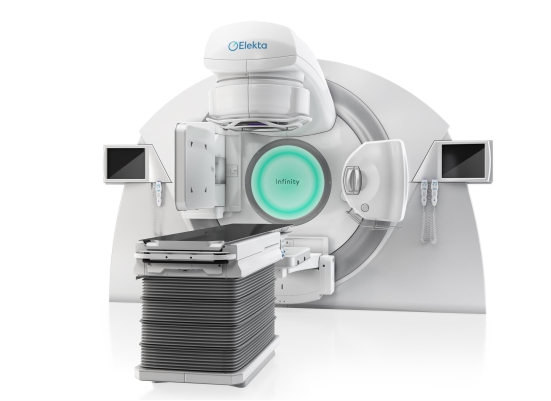
Elekta Infinity
Flexibility redefined, truly multifunctional
Elekta Infinity, equipped with Agility, facilitates the delivery of sophisticated image-guided treatments for a variety of patients. The high performance of Agility and VMAT ( Volumetric Modulated Arc therapy ) not only offers reduced treatment times, but it can also increase patient throughput. Patients will also benefit from the more precise adaptation to target volumes and, thus, increased sparing of organs at risk.
Elekta Infinity is ably assisted with
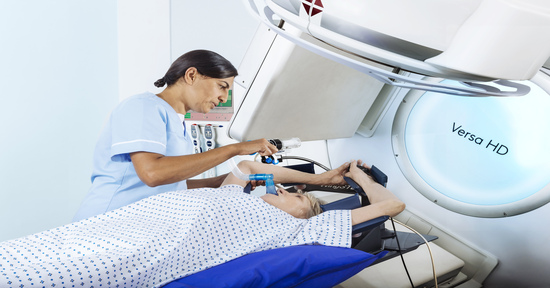
Active Breathing Coordinator ™
Respiratory motion management
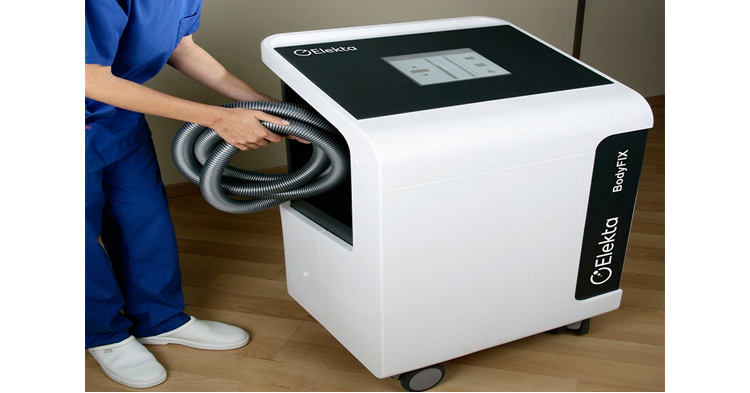
BodyFIX® patient immobilization
Precise patient positioning and immobilization
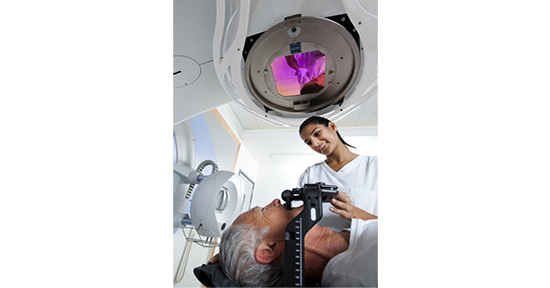
Fraxion™
Patient-Specific Cranial Immobilization
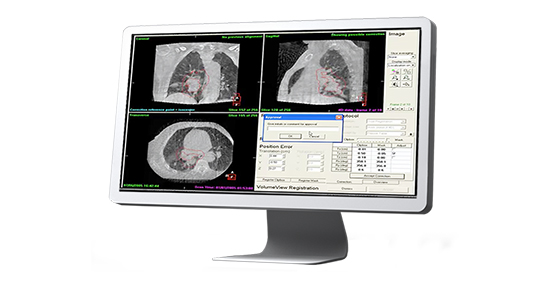
Symmetry™
4D tumor Position visualization

FFF (Flattening Filter Free) Mode (6 FFF)
A flattening filter is a component in a medical linear accelerator, made up of high atomic number material to flatten the beam and create uniform field during the treatment. In all the treatments of Intensity Modulation, like IMRT (Intensity Modulated Radiotherapy), IGRT)( Image Guided Radiotherapy) etc., the flattened beam is altered or modulated by creating small segments with the motion of the Multi Leaf Collimator. This decreases the dose rate and results in an extended treatment delivery.
In Modern linear Accelerators, the flattening filter is removed in a Photon energy which benefits increased dose rate, faster and better treatment delivery. The new linear accelerator, Elekta Infinity is equipped with a FFF (Flattening Filter Free) Mode, 6 FFF. The use of FFF (Flattening Filter Free) in the hypo fractionated treatments like SRS ( Stereotactic Radio Surgery), SRT ( Stereotactic Radiotherapy ) and SBRT ( Stereotactic Body Radiotherapy), reduces the treatment time to one third of normal time that enhances the accuracy and patient comfort.
Read more on how it can be used for each specialisation
Contact Us
Contact Information
Dr.Kamakshi Memorial Hospitals
No:1 Radial Road, Pallikaranai,
Chennai,Tamilnadu,India
600100
+918939522922
os@drkmh.in
